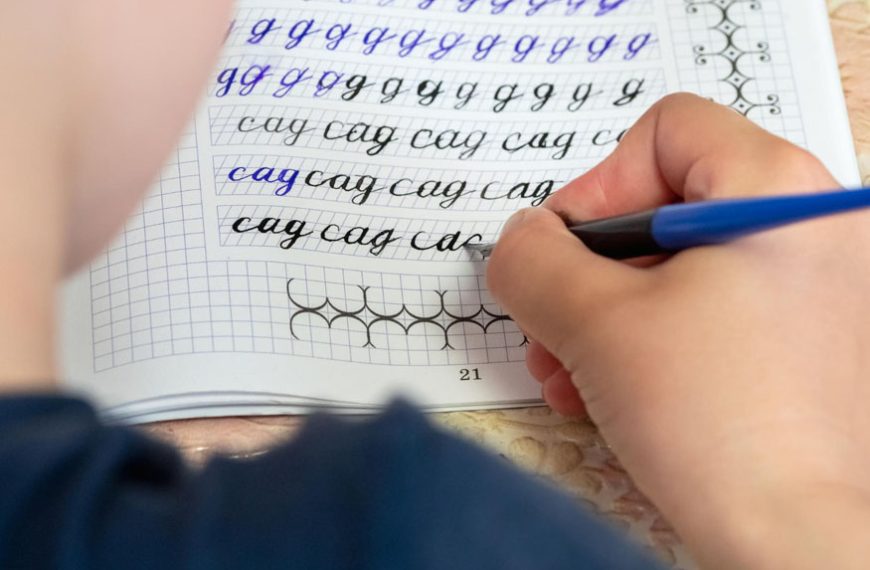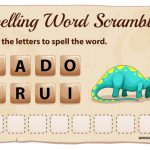Remember the time we used to write Letters to people far away? There was something magical about the way the ink spilled onto paper. As though we had opened a portal into another world! Back then, we called it ‘Handwriting.’ The proper term for this long lost art, is ‘Cursive Writing’?
Did you know that learning cursive writing is akin to learning a musical instrument, such as the Violin? All because, when the hand is in continuous ‘flow’, the brain is exposed to all kinds of tactile inputs. Moreover, one is making use of those gross motor skills, too. Needless to say, these skills ,when mastered at an early age, give a great boost to the development of children.
Sadly, cursive writing is a dying art in today’s day and age. It is ironic to think that it has even been relegated to being called an ‘Art.’ After all, back in the day, it was standard practice!
In this article you will learn all things Cursive Writing, ranging from How to teach Kids Cursive Writing, to how to effectively garner some Cursive Writing Practice and even, Cursive Writing Tips!
Cursive Writing: How to Teach it to Preschoolers
Preschoolers these days might be able to type faster on their iPads, than people would on typewriters back in the day. However, that’s no reason they can’t learn Cursive Writing. If we could do it, so can they!
Here’s a look at the steps in which you can effectively teach preschoolers, the Art of Cursive Writing.
- Introducing a letter at a time
- Letter Formation
- Cursive Writing: Small Letters
- i, u, w, t, r, s, j, p
- e, l, b, f, h, k
- n, m, v, y, x, z
- Cursive Writing: Big Letters
- C, O, Q, E, L, G
- A, M, N, S, T, F, I, J
- P, R, B, H, K, D
- U, V, W, X, Y, Z
- Forming a ‘Connection’
- oo, oa, od, og
- iu, iw, it, is
- Take it further
While it might come naturally to us, the Cursive Writing Alphabet takes some practice for the rookie! To do: Introduce a letter at a time, and then get them to practice the old letters along with the new.
One of the hallmarks of a good Cursive Writing Practice, is mastering the ‘form’ of every single letter. To do: Once again, you want your kids to ease into this practice. Let your children pace themselves, so they can get that vital form of each letter of the Cursive Writing Alphabet, exactly right.
Learning Small letters in Cursive Writing is important, but did you know that there’s a method that works better than others? To do: You want to group those lowercase letters, by the ‘kinds’ of formations they are prone to follow.
For Example: The Letters c, o, a, g, d and qIn the case of the above letters, you will find that they all essentially have the same ‘strokes’ and ‘curves. ’ If you teach them to your preschooler in this particular sequence, you will get them to learn them faster! Other sequences of Cursive Letters you want to follow:
Of course, that Cursive Writing Practice for kids entails their learning of Uppercase Letters, too. To do: Just like in the case of the lowercase letters, Uppercase Letters, too, can be learned more easily when arranged in a sequence. The Sequences to follow when learning Uppercase Letters:
It’s only when those letters are ‘connected’, that children become accustomed with that vital sense of ‘flow’. Indeed, the hallmark of Cursive Writing for Kids! To do: Start your preschooler off with some basic ‘connection’ sequences, like the following:
By now your child has mastered the basics of Cursive Writing. It’s time to take that Cursive Writing Practice of Kids to the next level!
To do: You want to start teaching your little one, some simple words in cursive writing. These should be two- or three-letter words, to begin with.
Example: You can start with words like ‘to’, and then gradually up the ante and get them to learn words like ‘hat.’
Once they get savvy with writing simple Words, you want to start getting them to write Short Sentences, too! Finally, that cursive writing for kids that began with the mere basics, will develop into a full-blown practice where they learn to write entire Paragraphs!
Cursive Writing Tips: Acing the Art of Cursive Writing
Presenting some Cursive Writing Tips, that will be sure to help your Preschooler ‘up’ their Cursive Writing Game!
- Don’t focus on Neatness
- Let them go at their own pace
- Make it a fun-filled exercise
- Let them begin by ‘tracing’ the letters
- Write along with them !
If you’re a cleanliness freak, you might even freak out if your child’s writing is shabby! You must allow them to write freely, as the main focus is on developing the ‘Muscle Memory’ they will need, to make those beautiful strokes.
This cannot be stressed enough. Your neighbour’s child might seem to be mastering the art of Cursive Writing faster than your little one, but so what? Every child is different!
Cursive Writing needn’t be boring. Get your kids to practice letter writing with chalk on a blackboard. Or, you could even hand them some funky-coloured crayons, and have them write on a sheet of paper!
This is especially effective, when it comes to getting the hang of those ‘letter formations.’
This is one of the best ways to get your children to learn the art of Cursive Writing. After all, they follow you in just about everything else you do!
At EuroKids we believe that Cursive Writing brings along with it a plethora of benefits. High on the list, is the fact that it helps promote cognitive development, through its activating both hemispheres of a child’s brain. Moreover, it also goes a long way in helping promote their being able to think creatively.















